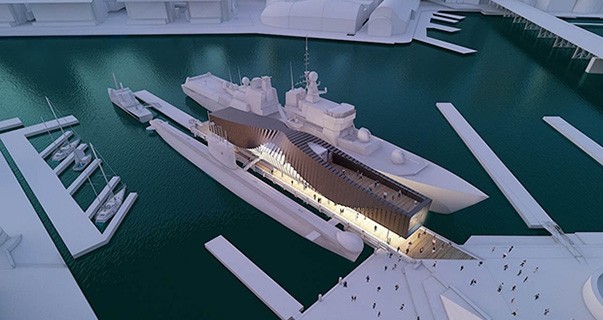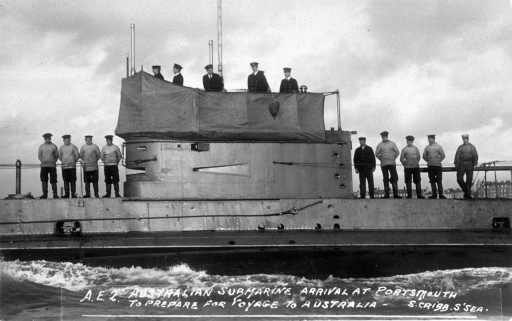Australia is to pay tribute to the role of its navy in the First World War, with a new building at the Australian National Maritime Museum in Sydney promising visitors a “dynamic and interactive” experience of a century of naval history.
The Warships Pavilion is due to open in September 2015, the 101st anniversary of the loss of the Royal Australian Navy’s first submarine, AE1, during operations to capture German colonies in the Pacific Ocean.
Visitors to the museum on Sydney’s waterfront will also be able the follow the story of another submarine, AE2, and its voyage under fire through the narrow straits of the Dardanelles in Turkey.
The Australian Government says this will be the only major and permanent Centenary project commemorating Australia’s naval involvement in the First World War. Construction is expected to start in July 2014.

Illustration of the planned Warships Pavilion, courtesy of Australian National Maritime Museum
Arts Minister George Brandis said: “The pavilion will be a permanent tribute to the men and women of the Royal Australian Navy and ensure their stories and experiences are remembered and shared with future generations.”
“More than half a million people, including over 50,000 school children, will visit the new pavilion each year and learn about the role of the Navy during and following the First World War.”
A memorial to AE1 will form part of the entrance to the pavilion in Sydney’s Darling Harbour. The submarine disappeared while on patrol on 14th September 1914, a day after the surrender of the German colonial capital in New Guinea. The entire crew of 35, drawn from both the Royal Australian Navy and Britain’s Royal Navy, was lost.
To this day no trace has been found of AE1 and the cause of the tragedy is still unexplained.
Gallipoli campaign
AE1’s sister submarine, AE2, achieved fame for forcing its way through the heavily defended channel of the Dardanelles at the start of the Gallipoli campaign against the Ottoman Empire in April 1915.
The submarine succeded in reaching the Sea of Marmara but had to be scuttled after suffering mechanical problems during an attack by a Turkish torpedo boat. All the crew survived but four sailors were to die in captivity.
The Warships Pavilion will explore these First World War engagements within the context of Australia’s naval operations during the Second World War and subsequent conflicts, showing how the legacy of each era influenced the next phase of design and development.
It will also bring to life the human stories behind the uniforms, contrasting the experiences of naval servicemen and women over the past 100 years and highlighting the similarities.
During 2014, the Royal Australian Navy will pause to remember the losses of AE1 and AE2, and commemorate the men who served in them.
Source: Australian Minister for the Arts, Royal Australian Navy
Date of press release publication: 30th January 2014
Images courtesy of Australian National Maritime Museum
Posted by: Peter Alhadeff, Centenary News
